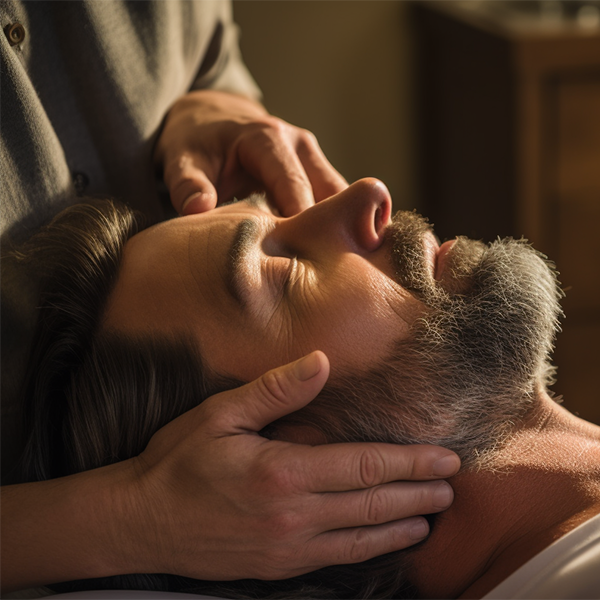

Although Osteopaths are generally thought of as ‘back specialists’, we treat a wide range of conditions. Osteopathic treatment does not target symptoms only but treats the parts of the body that have caused the symptoms.
Osteopaths have a holistic approach and believe that your whole body will work well if your body is in good structural balance. We use a wide range of techniques, including massage, cranial techniques (sometimes referred to as ‘cranial osteopathy’) and joint mobilization and this breadth of approach allows us to focus on every patient’s precise needs
Osteopathy is suitable for almost anyone and can contribute to the treatment and management of a wide range of conditions. Osteopaths primarily work through the neuro-musculo-skeletal system, mostly on muscles and joints, using holistic and patient centred approaches.
Osteopaths use a wide range of gentle manipulations, depending on your age, fitness and diagnosis. Treatment is different for every patient but may include techniques such as different types of soft tissue massage and joint articulation to release tension, stretch muscles, help relieve pain and mobilise your joints.
Osteopaths use a wide range of gentle manipulations, depending on your age, fitness and diagnosis. Treatment is different for every patient but may include techniques such as different types of soft tissue massage and joint articulation to release tension, stretch muscles, help relieve pain and mobilise your joints. They may use essential oils in massage oil to ease the massage and alleviate pain.
We may discuss exercises that you can do to improve your posture and movement in your workplace and everyday life.
All osteopaths in the UK are regulated by the General Osteopathic Council (GOsC). It is against the law for anyone to call themselves an osteopath unless they are registered with the GOsC, which sets and promotes high standards of competency, conduct and safety.

We have at least one Osteopath available each weekday. We always endeavour to arrange an appointment to suit each individual following contacting us. Anyone wishing to discuss whether Osteopathy is suitable for themselves can speak to an Osteopath beforehand either in person or by telephone.
Many private health insurance schemes offer benefit for osteopathic treatment, although some will require GP or specialist referral prior to treatment.
Further information about osteopathy can be obtained from the British Osteopathic Association website (www.iosteopathy.org) and from the General Osteopathic Council website (www.osteopathy.org.uk).
Contact us :
Phone: 0114 255 2048
Mobile: 0752 294 4194

Matthew Watts
Matthew qualified from the British School of Osteopathy in 1986. He works structurally, his treatment consisting of soft tissue massage, gentle stretching, articulatory and manipulative techniques; he has extensive experience treating patients of all ages.
“Educating the patient to help them to understand their condition is an essential component of my approach. When a cure is not possible, the goal should always be to live with the condition but without the pain.”

Amelia-Rose Collins
Amelia-Rose qualified from the British School of Osteopathy in 1995. Her interest in osteopathy began at an early age after she received treatment as a young girl.
“I discovered that osteopathy provides a unique opportunity to treat the patient as a whole person. You deal with the mechanical problems of the body whilst also taking into consideration the patient’s way of life.”
We have osteopaths registered with AXA, PPP, Simplyhealth (formerly HSA) and Westfield Health.
All our Osteopaths are registered with the General Osteopathic Council. It is a criminal offence to call oneself an Osteopath if one is not registered. The GOsC will prosecute individuals who practise as Osteopaths but are not on the GOsC register. All our Osteopaths renew their registration each year and have current protection indemnity insurance. They all meet the mandatory continuing professional development requirements. GOsC sets high standards of safety, competence and conduct. To qualify an Osteopath must study for four or five years. The training has emphasis on anatomy and includes more than 1000 hours of Osteopathic technique training.
Osteopaths’ patients include the young, older people, manual workers, office workers, pregnant women, children and sports people.
Some private health insurance schemes offer benefit for Osteopathic treatment, although some require GP referral prior to treatment. All our Osteopaths are registered with Westfield Health and simplyhealth.
The practice of Osteopathy has a long history in the UK. The first school of Osteopathy was established in London in 1917 by John Martin Littlejohn. After many years of existing outside the mainstream of health care provision, the osteopathic profession in the UK was finally accorded formal recognition by Parliament in 1993 by the Osteopaths Act. This legislation now provides the profession of osteopathy the same legal framework of statutory self-regulation as other healthcare professions such as medicine and dentistry.
GPs may refer patients to Osteopaths where they believe this intervention would be beneficial. Referral guidelines are provided by the General Medical Council. The standards of osteopathic training and practice are maintained and developed by the General Osteopathic Council, the profession’s statutory regulator established under the Osteopaths Act 1993.